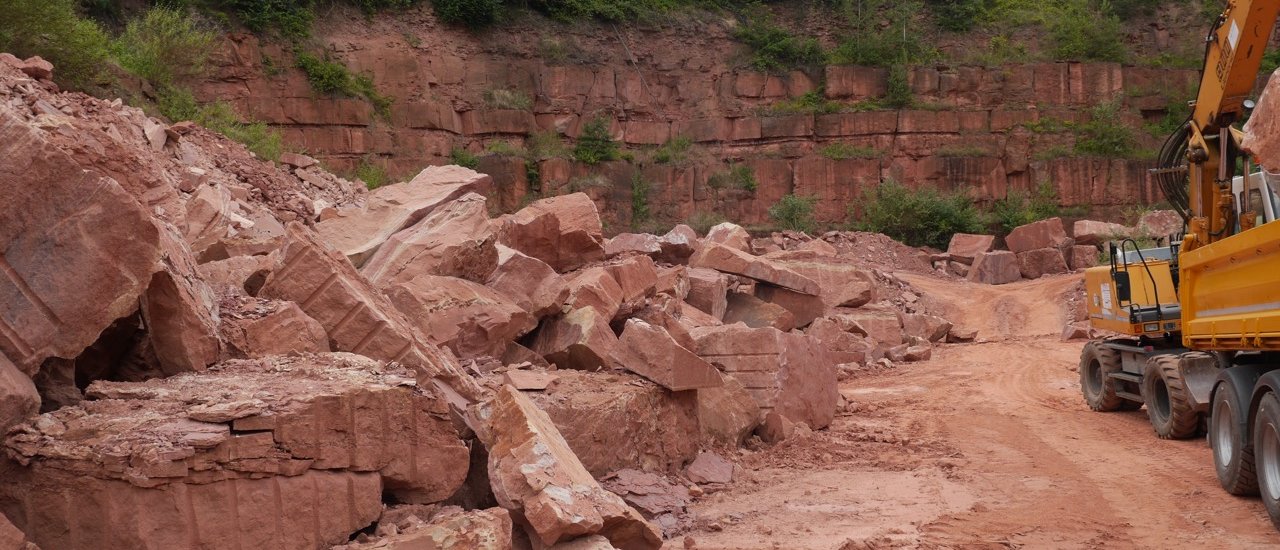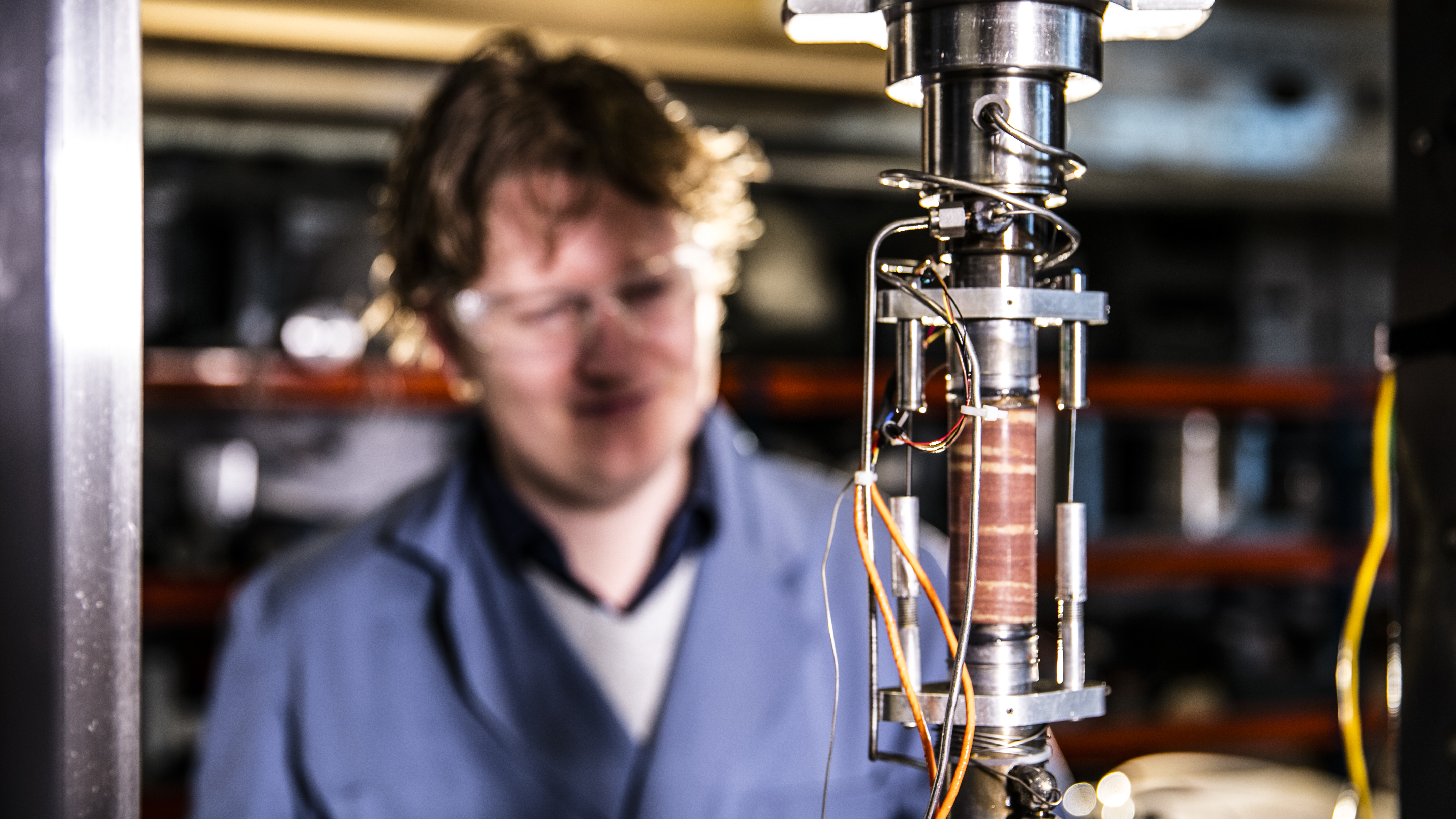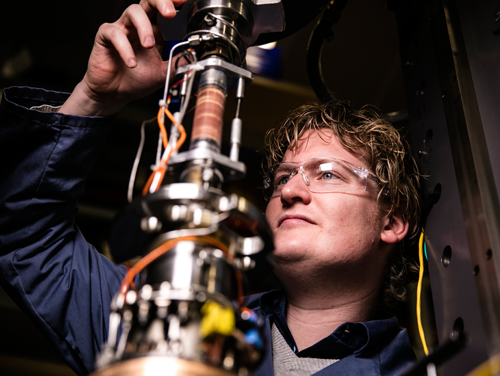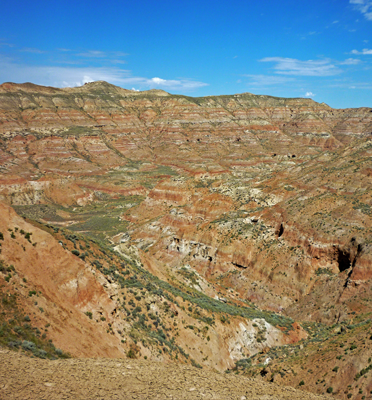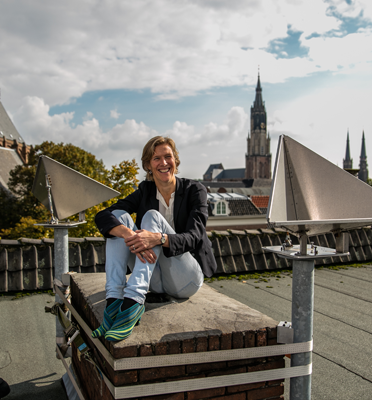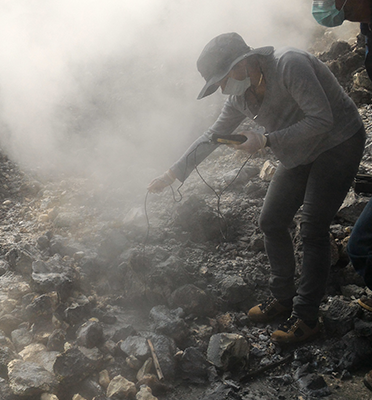The deeper you go into the ground, the hotter it gets. Researcher Richard Bakker knows all about this. He is currently working on geothermal energy: using the heat from the subsurface to generate sustainable energy.
"You do not simply dig for energy," explains Bakker. "There must be water in the subsurface at a depth where the temperature is just right." By pumping up this hot water, you can power a steam turbine or use it for heating, depending on the temperature of the water. This makes it possible to heat your home and even power lights using geothermal energy.
Bakker: "Unfortunately, geothermal energy cannot yet be successfully used everywhere because not all rock types in the subsurface allow the water to flow equally well. This is the case in large parts of Europe where sandstone layers predominate. These layers are not permeable enough to allow sufficient water to pass through." Bakker is therefore studying the precise properties of this rock and whether it can be made more permeable by drilling holes in it. He does this as part of the SURE project in the Geoscience & Engineering lab at TU Delft.
In the lab, Bakker is studying sandstone from the Buntsandstein formation, which he obtained from a quarry in Germany. The rocks exposed here are of the same rock type which is located at a depth of about 3 kilometres underground in the Netherlands. At this depth, the temperature is about 90 degrees Celsius, and all the rock layers that bear down on it mean that the sandstone is at a pressure of about 700 bar. "That is roughly 200 times more pressure than in a regular bicycle tyre," says Bakker. What effect this has on the rock? "The substrate reacts like a sponge. If you press a sponge completely flat, it no longer holds any water at all. Rock responds in much the same way."
Bakker: "To gain a good picture of the properties of the rock, you have to recreate both the pressure and the temperature as it is at a depth of 3 kilometres below the surface." To accomplish that, Bakker tests pieces of stone in the lab using a pressure vessel and oil. The temperature and pressure can be increased in such a way that the piece of rock is put to the test just like it would be deep in the subsurface. Bakker does note, however, that the oil is not heated beyond 200 degrees Celsius. "This is to benefit the quality of life in the lab. Otherwise, things could spring a leak and I'd be cleaning up oil for the rest of the day!" Through these experiments, Bakker is able to map out the properties of this type of sandstone.
Using another experiment, he studies what happens when holes are drilled into the rock with high pressure water jets. These holes create more space for water and also make the rock more permeable. In this way, water could be pumped into the subsurface at the surface of the Earth in order to push up the hot water, which is already present there. Pumping up more hot water means more energy. But can the rock also handle all the pressure when it's full of holes? "This is unique research," says Bakker. "It is very difficult to see what exactly happens in the subsurface. At best, you can observe it from a distance by lowering a camera down a drilling well. This is the first time that this drilling process has been closely studied in a lab while the rock is under pressure. I conduct experiments together with the team in the lab in which I test stone blocks on a large pressure bench. Next, I start drilling and continuously increase the pressure of the water jet to see how the rock responds."
In order to properly assess how all that drilling, pressure and heat affect the Buntsandstein samples, Bakker uses an actual CT scanner located in the lab. The scanner allows him to view the internals of the stone, as it were. "I compare the internal structure of the rock before and after the experiment. I can even identify fine hairline cracks."
“Thanks to all these tests, I am collecting a lot of measurement data," says Bakker. This data is very important because it provides the foundation for statistical models that will be used to prepare risk analyses for geothermal projects. "Because there will be more information about the characteristics of the Buntsandstein sandstone once this study is complete, it will be possible to use geothermal energy with fewer risks, even in areas where this is not yet possible."
Published: January 2018
Credentials header: (c) H. Tünte / SURE project
